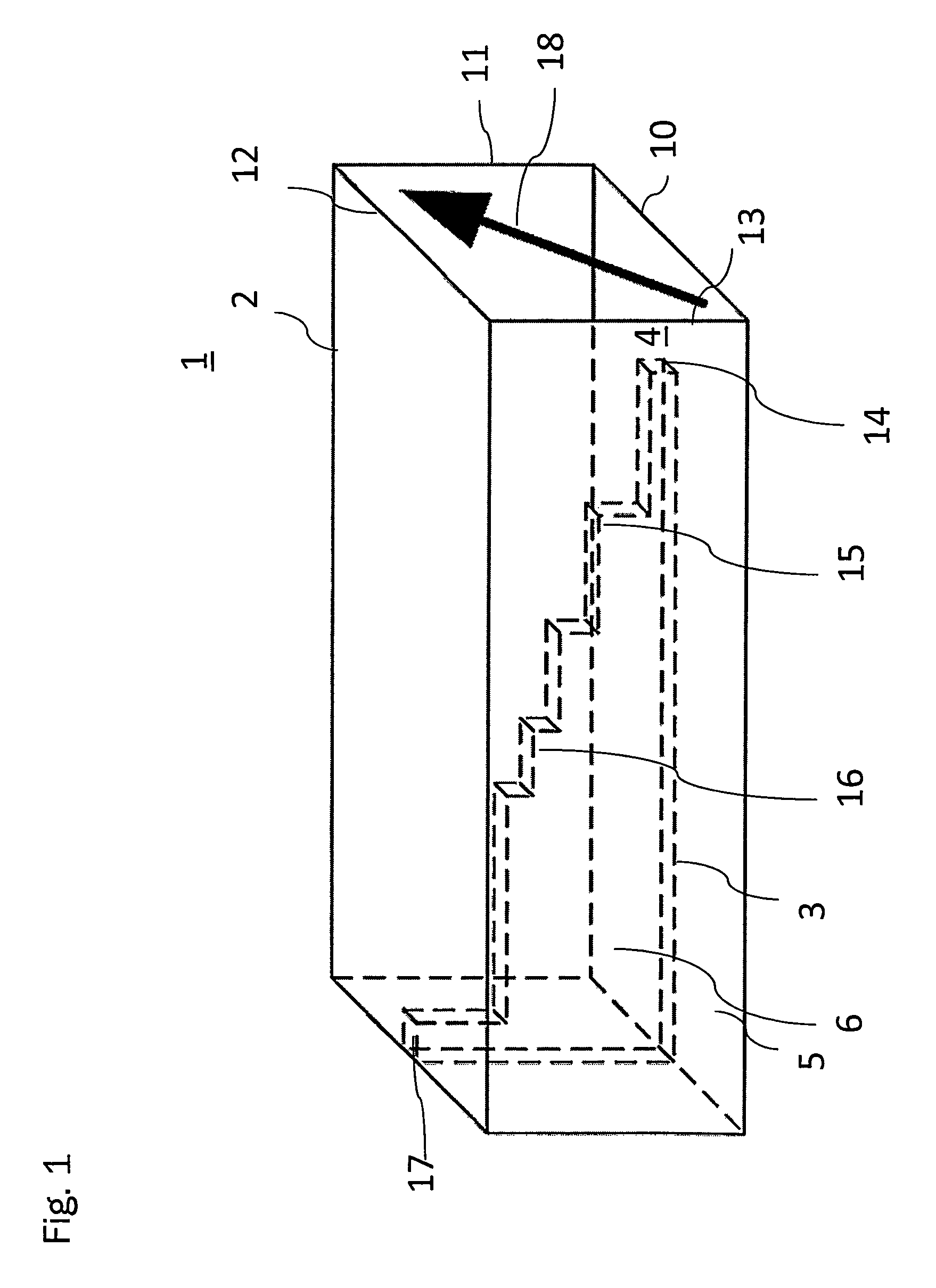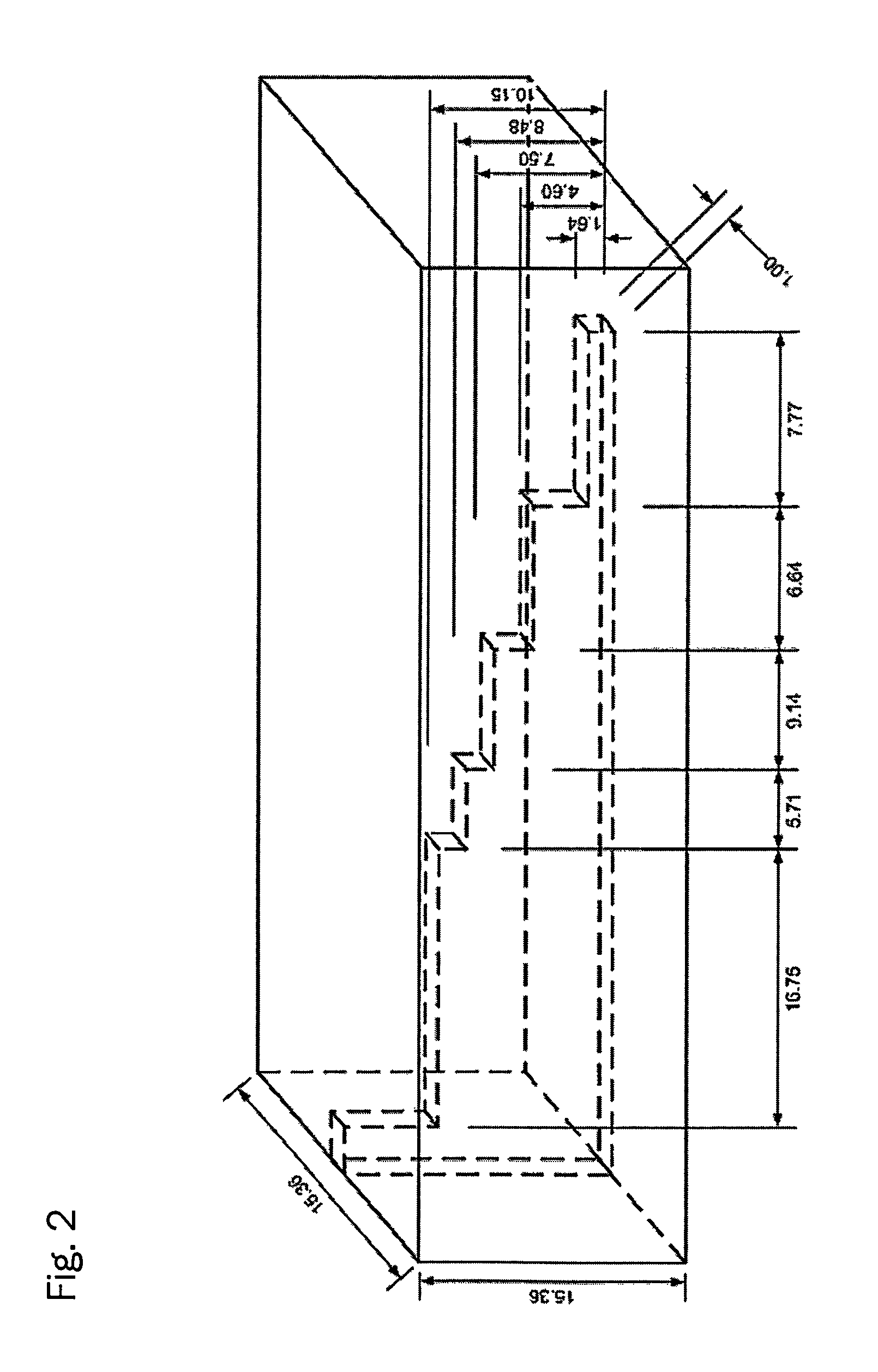Compact OMT device
a technology of electromagnetic signal processing and compact structure, which is applied in the direction of coupling devices, electrical equipment, and antennas, can solve the problems of reducing the power handling of the device, assembling problems of the feed system using the above-mentioned types of omt devices, and reducing the power handling drastically. , to achieve the effect of high power handling solution, increased multipaction risk, and cost-effective manufacturing
- Summary
- Abstract
- Description
- Claims
- Application Information
AI Technical Summary
Benefits of technology
Problems solved by technology
Method used
Image
Examples
Embodiment Construction
[0034]FIG. 1 illustrates a perspective side view of a compact OMT according to an embodiment of the invention. In the exemplary embodiment depicted in FIG. 1, the orthomode transducer 1 comprises an elongate piece of a hollow electrically conductive waveguide 2 having a square cross-section. The four walls of the waveguide are designated 10, 11, 12, and 13, as shown. A thin elongated electrically conductive septum 3 extends along the longitudinal axis of the compact OMT and forms a plane that is situated halfway between walls 11 and 13. This particular septum 3 has a step-shaped portion causing the septum 3 to be successively increasing in height between the walls 10 and 12.
[0035]The waveguide portion between a first open end of the waveguide (indicated by the black arrow in FIG. 1) and the starting point 14 of the septum form the first waveguide portion 4 that has the same cross-section as the guide section 2. The cross-section of the first waveguide portion 4 (which is the corresp...
PUM
 Login to View More
Login to View More Abstract
Description
Claims
Application Information
 Login to View More
Login to View More - R&D
- Intellectual Property
- Life Sciences
- Materials
- Tech Scout
- Unparalleled Data Quality
- Higher Quality Content
- 60% Fewer Hallucinations
Browse by: Latest US Patents, China's latest patents, Technical Efficacy Thesaurus, Application Domain, Technology Topic, Popular Technical Reports.
© 2025 PatSnap. All rights reserved.Legal|Privacy policy|Modern Slavery Act Transparency Statement|Sitemap|About US| Contact US: help@patsnap.com



